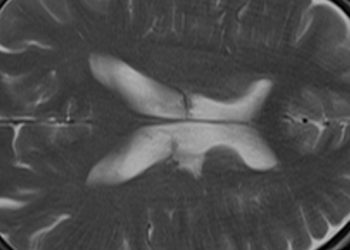Cerebral embolic protection during transcatheter aortic-valve replacement does not reduce the incidence of stroke
1. In patients with aortic stenosis undergoing transcatheter aortic valve replacement (TAVR), the use of cerebral embolic protection devices did not have a significant effect on the incidence of periprocedural stroke.
2. There was no difference in adverse effects in patients who received cerebral embolic protection versus the control group.
Evidence Rating Level: 1 (Excellent)
Study Rundown: TAVR is a well-established intervention used for patients with aortic stenosis. Notably, embolization of debris from the valve or vasculature can cause a periprocedural stroke. Though the risk of stroke with TAVR is decreasing with newer-generation devices and is similar to that after surgical aortic valve replacement, it is still an important complication of the procedure to be aware of. Recently, the Sentinel cerebral embolic protection (CEP) device by Boston Scientific was approved by the Food and Drug Administration (FDA) for the capture and removal of embolic material during TAVR. However, there remains a gap in knowledge as to understanding whether CEP will reduce the risk of periprocedural stroke in patients receiving TAVR. Overall, this study found that in patients with aortic stenosis undergoing TAVR, the incidence of procedural complications was similar among those who underwent TAVR with or without CEP. This study was limited by restricting a small number of endpoints with only short-term follow-up and the CEP group included a greater percentage of female patients than the control group. Nevertheless, these study’s findings are significant, as they demonstrate that the use of a CEP device does not significantly impact periprocedural stroke risk or any other complications in patients who underwent TAVR for aortic stenosis.
Click to read the study in NEJM
Relevant Reading: Surgical or Transcatheter Aortic-Valve Replacement in Intermediate-Risk Patients
In-Depth [randomized controlled trial]: This prospective, post-market, multicenter, randomized control trial evaluated the Sentinel CEP device in patients with aortic stenosis undergoing transfemoral TAVR. Patients that had aortic stenosis and were scheduled to undergo TAVR with the transfemoral placement of a commercially available device were eligible for the study. Patients with left common carotid or brachiocephalic artery greater than 70% diameter stenosis or if the anatomical structure was otherwise incompatible with the placement of the CEP device were excluded from the study. The primary outcome measured was clinical stroke within 72 hours after TAVR or before discharge. Outcomes in the primary analysis were assessed via an intention-to-treat population with chi-square test or Fisher’s exact test. Based on the primary analysis, the incidence of stroke within 72 hours after TAVR or before discharge did not differ significantly between the CEP group and the control group (2.3% vs 2.9%; difference of -0.6%, 95% Confidence Interval -1.7 to 0.5). For other adverse effects, there were no significant differences between the CEP group and the control group with regard to patients who experienced a disabling stroke, death, delirium, or an acute kidney injury. Overall, this study demonstrates that the use of a CEP device in patients with aortic stenosis undergoing TAVR did not have a significant effect the incidence of periprocedural stroke or any other adverse outcome.
Image: PD
©2022 2 Minute Medicine, Inc. All rights reserved. No works may be reproduced without expressed written consent from 2 Minute Medicine, Inc. Inquire about licensing here. No article should be construed as medical advice and is not intended as such by the authors or by 2 Minute Medicine, Inc.







